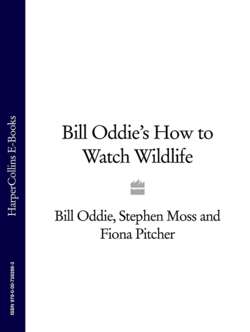Читать книгу Bill Oddie’s How to Watch Wildlife - Stephen Moss - Страница 23
How do I see an owl?
ОглавлениеThere are five species of owl found regularly in the United Kingdom, and they are surprisingly common and widespread – yet can be almost impossible to see. That is, of course, unless you have to hand the right information, you are willing to make a bit of an effort, and you have some good fortune.
The late autumn and winter months, from October through to March, are definitely the best time to see owls. Why? Because the lack of food compared with the spring and summer means that they have to be out hunting much of the time. Not all owls are nocturnal, and the daytime and dawn and dusk hunters have even less time than at other seasons of the year. Even the two truly nocturnal species, long-eared and tawny, are easier to see because of their habit of roosting at regular and often visible sites, which are often well known to local birdwatchers.
So how do you find out where you might see a roosting owl? One way is to read the county bird report (available at your local library), or better still, join your local bird club, whose members will often have access to privileged information and be able to show you the owls. If you do visit a roost site, however, always have the welfare of the birds in mind: a roosting owl is trying to get some sleep, and you should keep your voice down and avoid sudden movement, even if the bird seems unconcerned. You will not be popular if the owl deserts the site.
Two other species of owl, little and short-eared, are primarily daytime hunters. Little owls were introduced to southern Britain in the Victorian era and, unlike many such foreign incomers, appear to have thrived without causing harm to other wildlife. When seen well, a little owl is unmistakable: tiny, plump, with piercing yellow eyes. Look for them perched on fence posts, barn roofs and pollarded oak trees or willows. Short-eared owl numbers have declined in recent years, and your best chance of seeing them is by visiting a coastal marsh or farmland and keeping an eye out for one flying low over the ground as it hunts for voles.
